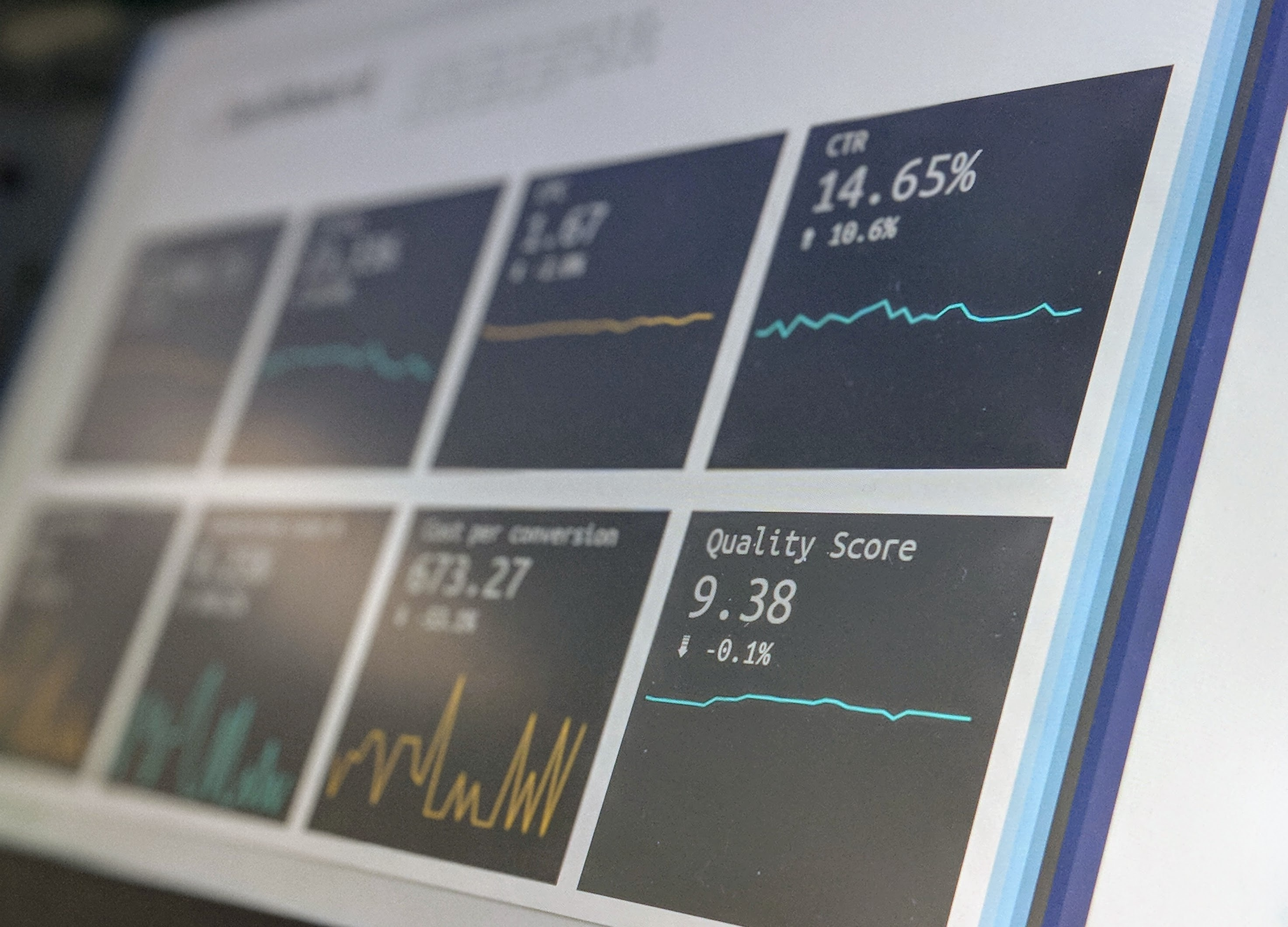The Chief Financial Officer (CFO) is vital to any organisation’s success. Hiring an inappropriate CFO may lead to financial disaster. Thus, hiring managers and recruiters must understand the CFO job description. It is essential before making a hire.
A full job description includes the roles, duties, and reporting lines. It also lists the needed technical and soft skills. It includes stakeholder expectations and the CFO’s perks. In this article, we will explore the CFO’s profile and position in the organization. We will also provide an example of a CFO job description template to help you find the perfect candidate.
Photo by Austin Distel on Unsplash
The Chief Financial Officer Profile and Key Responsibilities
The CFO holds a strategic position within an organisation. They are crucial to financial decision-making. They drive the company’s financial growth and ensure fiscal stability. CFOs are qualified accountants. They have bachelor’s or master’s degrees in accounts and finance. They also have related certifications. These include Chartered Accountants (ACA) or Certified Public Accountants (CPA).
Companies need different types of experience for the Chief Financial Officer position. The required experience varies by company size, industry, and location. Financial professionals usually have 10 to 15 years of experience. They earned it through management in some cases. Following are some of the CFO’s responsibilities:
- Financial planning and analysis. The CFOs create and execute financial plans. They analyse financial data and give insights and recommendations. These help drive profits and growth. They assess investment opportunities, test potential risks, and advise on capital allocation.
- Risk management and compliance. CFOs are pivotal in managing financial risks. They ensure compliance with legal and regulatory frameworks and install internal controls. They oversee audits, maintain accurate financial records, and safeguard the organisation’s assets.
- Strategic Decision-Making. The CFO is a strategic partner for the CEO and executive team. They contribute financial expertise to business decisions. They assess if new projects, mergers, and investments are financially feasible. They consider long-term sustainability and return on investment.
- Investor Relations and Fundraising. The Chief Financial Officers engage with investors, analysts, and stakeholders. They present financial performance and growth plans. They join in fundraising. This includes debt and equity financing. They also build strong relationships with financial institutions and potential investors.
Photo by Stephen Dawson on Unsplash
The Positioning of Chief Financial Officer within an Organisation
The position of the Chief Financial Officer within an organisation can vary. It depends on the company’s structure and size. Yet, the Chief Financial Officer holds a key and influential position. They are a top executive team member and work with other senior executives. They collaborate to align financial strategies with business objectives. Let’s compare the positioning of the CFO with that of other executives in an organisation:
- CEO (Chief Executive Officer). The CEO is the highest-ranking executive in the organisation. They are responsible for leadership and decision-making. The CFO works closely with the CEO. They provide financial insights and recommendations to support the company’s goals. The CFO often reports to the CEO. They also collaborate on financial strategies, risk management, and long-term planning.
- COO (Chief Operating Officer). The COO oversees the company’s daily operations. They ensure efficiency and effectiveness in many business functions. The CFO works with the COO to align financial strategies with operational goals. They analyse finances. They also give guidance on how to divide resources. They cover managing costs and improving processes.
- CIO/CTO (Chief Information Officer/Chief Technology Officer). The CIO, or CTO, focuses on technology and information systems within the organisation. The CFO works closely with the CIO and CTO. They evaluate the financial effects of technology investments. They also check data security and IT infrastructure changes. This happens even if their primary focus is finance. This collaboration ensures that financial considerations are considered when making technology-related decisions.
- CMO (Chief Marketing Officer). The CMO develops and carries out marketing strategies. These strategies promote the company’s products or services. The CFO works with the CMO to study the financial impact of marketing. They also look at budgets for marketing campaigns. They track the return on investment (ROI) of marketing spending.
- CHRO (Chief Human Resources Officer). The CHRO oversees the organization’s human resources functions. This includes talent acquisition, employee engagement, and performance management. The CFO may work with the CHRO to study and manage personnel costs. These costs include salaries, benefits, and training expenses. The CFO ensures that they align with the company’s financial goals.
Each executive plays a distinct role in the organisation. Yet, they have financial expertise and influence the most important decisions. So, the role of the Chief Financial Officer is vital. The Chief Financial Officer collaborates with other executives. They offer financial insights and help shape strategies. These strategies drive the company’s growth, profitability, and long-term financial health.
Photo by Austin Distel on Unsplash
Vital Elements of CFO Job Description
You must tailor the job description to the organization’s needs and requirements. It must align with its goals, culture, and industry dynamics. Here are the key elements to consider when creating the CFO job description:
- The job title is Chief Financial Officer (CFO). This clarifies and establishes the role’s seniority.
- Overview and Purpose. Please provide a summary of the organisation and the purpose of the CFO role within it. Explain the importance of the CFO. The CFO drives financial strategy. They also ensure financial stability and support business goals.
- Responsibilities and duties. Outline the duties this Chief Financial Officer will be accountable for. This may include financial management and planning. It may also include financial reporting and compliance. It involves risk management, stakeholder management, and leading a team.
- Reporting Lines. Specify the reporting lines of the CFO, including whom they report to and who reports to them. This clarifies the hierarchical structure. It also clarifies the CFO’s level of authority and influence in the organisation.
- Qualifications and skills. State the required qualifications, skills, and experience for the role. This may include educational background, certifications, professional experience, and technical and soft skills.
- Stakeholder Expectations. Describe what stakeholders expect. This includes the executive team. It also includes the board of directors, investors, and other relevant parties. Emphasise the need to build and keep strong relationships. Provide financial insights. Also, give accurate and timely financial information.
- Perks and Benefits. Mention specific perks and benefits offered to the CFO. These include good pay, stock options, bonuses, healthcare, and retirement. They also include flexible work and professional growth.
 ————————————————————————————————————–
————————————————————————————————————–
Photo by Firmbee.com on Unsplash
Example of CFO Job Description
Position: Chief Financial Officer
Location: [Company Location]
Reporting Line: Chief Executive Officer
You will manage 8–12 employees. This includes the financial controller, finance manager, senior accountant, and accountant.
Job Brief
We seek an experienced Chief Financial Officer (CFO) to join our team. The CFO will oversee all accounting and finance functions. This includes financial reporting, budgeting, and internal controls. This role needs strong leadership. It requires collaboration with cross-functional teams. It also needs a deep understanding of accounting principles and regulations.
Responsibilities
- You oversee the organization’s finances. You manage budgeting, forecasting, accounting, and cash flow.
- Create and enact financial strategies. They must match the company’s long-term goals.
- Provide financial analysis and recommendations to support critical business decisions.
- Watch the financial performance and identify areas for improvement.
- Ensure compliance with regulatory requirements and financial reporting standards.
- Manage relationships with external stakeholders, including auditors, investors, and financial institutions.
- Lead and mentor the finance team, fostering a high-performance culture.
Qualifications
A bachelor’s degree in accounting, finance, or a related subject. ACA or an MBA is preferred.
Experience
You need at least 15 years of experience in accounting and finance positions. This experience must include 5 years as the department head.
Skills
- You need a strong knowledge of financial management software. accounting principles and standards. financial reporting regulations.
- Proficient in financial analysis, budgeting, and forecasting techniques.
- Excellent leadership and team management skills.
- They have exceptional communication and presentation abilities. They can convey complex financial information to both financial and non-financial stakeholders.
- Strategic thinker who can analyse data, identify trends, and make sound business decisions.
- Experience in risk management, internal controls, and compliance procedures.
- Familiarity with financial systems and software for data analysis and reporting.
Perks and Benefits
- Competitive salary and performance-based bonuses
- Stock options and equity incentives
- Comprehensive health, dental, and vision insurance plans
- Retirement savings plan with employer-matching
- Generous vacation and paid time off
- Company car allowance or transportation reimbursement
———————————————————————————————————–
Key Performance Indicators for the CFO
When creating a CFO job description, keep in mind the outcomes. These outcomes show their effectiveness. The Key Performance Indicators (KPIs) are important metrics. They measure the performance and effectiveness of the CFOs in their roles.
Here are some KPIs. They provide a framework for evaluating the CFO’s work. They cover financial management, strategic decision-making, risk management, and stakeholder engagement. The specific KPIs may vary based on the organisation’s priorities and industry dynamics.
- Contribution to driving revenue growth and increasing the company’s financial performance.
- Ability to improve profit margins, control costs, and enhance financial profitability.
- Designing the capital structure well makes capital earn a profit.
- Ability to develop accurate financial forecasts and manage budget variances.
- The CFO’s financial forecasting accuracy compares projected financial outcomes to actual results.
- Skill in creating financial models and scenarios that support strategic decision-making.
- Success means improving cash flow. This happens by cutting the time to convert investments into cash.
- Ability to manage working capital, including accounts receivable, inventory, and accounts payable.
- Effectiveness in ensuring the company’s adherence to financial and regulatory compliance standards.
- You need to identify and reduce financial risks. These include credit, market, and operational risks.
- Success means implementing and keeping good internal controls. They protect company assets and stop fraud.
- Ability to build and maintain strong relationships with investors, analysts, and other stakeholders.
- Maintaining good credit ratings can impact the company’s capital costs. Rating agencies issue the ratings.
- Ability to provide accurate and timely financial reports to internal and external stakeholders.
- Success in building and leading a high-performing finance and accounting team.
- Ability to foster a positive and engaged work environment within the finance department.
Photo by marten-Bjork on Unsplash
Conclusion
The CFO plays a key role. They determine an organization’s financial and operational strategy. Finding the right CFO is crucial for any organisation’s financial stability and growth. Recruiters can use understanding the CFO job description to attract top candidates. It includes roles, duties, reporting lines, skills, stakeholder expectations, and perks.
Learn more about CFO careers by visiting our Jobs Resources section.
Search Jobs to find out about the job roles we currently have available.
Job Seekers
On the hunt for your next role? Upload your CV below and we’ll be in touch to discuss your requirements.
Employers
For employers seeking the right skills and cultural fit for your business, send us your vacancy to find out more about how we can help.
Submit CV Send Us Your VacancySearch Jobs
Popular this week
- What Qualifications And Skills Are Needed To Be An Accountant?
- How Does Industry 4.0 Differ From The Previous Generation?
- Agile For Accountants: Six Steps To Provide Necessary Tools And Relevant Processes
- What Are The Main Differences Between ACA and ACCA?
- What Are The Top Five Financial Accounting Facts For #AccountantsDay



